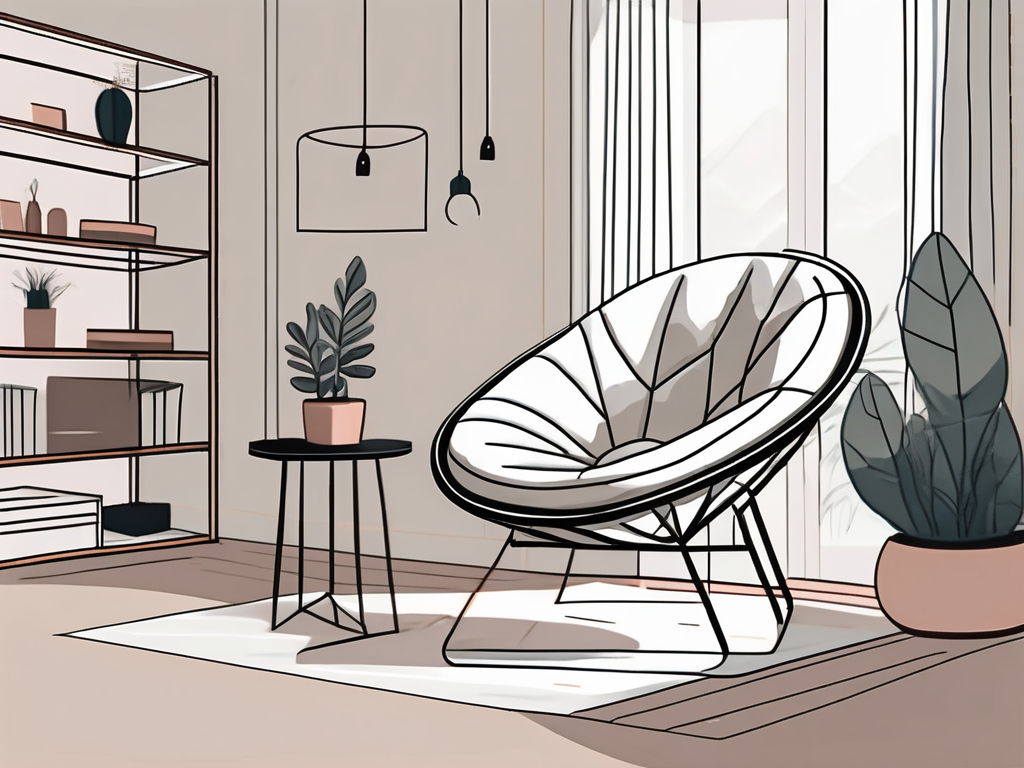How To Frame Your Art on the Cheap
Framing your art doesn’t have to be expensive. Discover creative ways to frame your pieces affordably, from thrift store finds to DIY solutions, while still achieving a stylish and professional look for your home.

Photo by Dan 7th
Framing art can be an expensive endeavor, but it doesn’t have to be. Whether you’re looking to frame a cherished family photo, a piece of your own artwork, or a print you bought online, there are plenty of ways to do it without breaking the bank. In this article, we’ll explore various methods and tips to help you frame your art affordably while still achieving a stylish and professional look. Framing not only protects your artwork but also enhances its visual appeal, making it an essential part of displaying your art. With the right approach, you can create a stunning presentation that showcases your pieces beautifully.
Understanding Your Framing Needs
Before diving into the different ways to frame your art on the cheap, it’s important to understand what you need. The type of art you’re framing, the size, and the style you’re aiming for will all influence your choices. Additionally, consider the environment where the art will be displayed, as factors like lighting and wall color can affect how the framed piece is perceived. Understanding these elements will help you make informed decisions that align with your vision.
Assessing the Art
First, take a good look at the piece you want to frame. Is it a photograph, a painting, or a print? The medium can affect the type of frame and matting you’ll need. For example, photographs might benefit from a simple, sleek frame, while paintings might look better in something more ornate. Additionally, consider the color palette of the artwork; a frame that complements the colors can enhance the overall aesthetic. If your art features vibrant colors, a neutral frame may allow the piece to stand out, while a colorful frame can add an extra layer of interest.
Consider the size of the art as well. Larger pieces might require more substantial frames, while smaller pieces can be framed more delicately. The size will also impact the cost, so keep that in mind as you plan. When measuring your artwork, remember to account for any matting you may want to include, as this can add to the overall dimensions. It’s also wise to think about how the size of the frame will fit into your intended display space. A well-proportioned frame can create a harmonious look, while an ill-fitting one can detract from the art itself.
Choosing a Style
Think about the overall aesthetic you want to achieve. Are you going for a modern look, a vintage feel, or something more eclectic? The style of the frame should complement the art and the room where it will be displayed. This will help narrow down your options and make the shopping process easier. Consider the existing decor in the room; a frame that matches or contrasts with the furniture and color scheme can create a cohesive look. For instance, if your room features rustic elements, a distressed wood frame might enhance the charm of your space.

Additionally, you might want to explore different frame styles, such as floating frames, shadow boxes, or traditional frames. Each style offers a unique way to present your art, and experimenting with various options can lead to exciting results. Floating frames, for example, create a sense of depth by allowing the artwork to appear suspended between two panes of glass, while shadow boxes can add dimension and allow for the display of three-dimensional objects alongside your art.
Shopping for Affordable Frames
Once you have a clear idea of what you need, it’s time to start shopping. There are several places where you can find affordable frames that don’t sacrifice style or quality. In addition to traditional retail options, consider exploring local artisan markets or craft fairs, where you might find unique, handmade frames that add a personal touch to your art display. These venues often feature local artists and craftspeople who create one-of-a-kind pieces that can elevate your artwork.
Thrift Stores and Flea Markets
Thrift stores and flea markets are treasure troves for affordable frames. You can often find unique, high-quality frames for a fraction of the cost of new ones. Don’t be afraid to buy a frame with art already in it; you can always remove the existing piece and use the frame for your own art. When browsing these stores, keep an open mind and be willing to dig through various options. You might stumble upon a vintage frame that perfectly suits your style or a quirky piece that adds character to your collection.

Look for frames that are in good condition, but don’t worry too much about minor scratches or dings. These can often be fixed with a little DIY effort. If you find a frame that you love but it’s not in perfect shape, consider giving it a fresh coat of paint or applying a new finish to revitalize its appearance. Additionally, you can mix and match different styles and colors of frames to create an eclectic gallery wall that showcases your personality and artistic taste.
Big Box Stores
Stores like Walmart, Target, and IKEA offer a wide range of affordable frames in various styles and sizes. These frames are usually mass-produced, but you can still find some stylish options that will look great on your walls. When shopping at these stores, take advantage of their seasonal sales and clearance events, which can lead to significant savings. Many big box retailers also have online platforms where you can browse their inventory and compare prices, making it easier to find the best deals.
Keep an eye out for sales and discounts, which can make these already affordable frames even cheaper. You might also find multi-packs of frames, which can be a great deal if you have several pieces to frame. Consider purchasing a few different sizes and styles to create a cohesive look across your art collection. By mixing and matching frames, you can achieve a curated gallery feel without spending a fortune.
Online Retailers
Online retailers like Amazon and Wayfair offer a vast selection of frames at competitive prices. Shopping online allows you to compare prices and read reviews, helping you find the best deals. Be sure to check the dimensions and materials carefully to ensure you’re getting a frame that will work for your art. Some online retailers also offer custom framing services, which can be more affordable than going to a specialty framing shop. This option allows you to select the exact size, color, and style of the frame, ensuring a perfect fit for your artwork.
When shopping online, consider looking for coupon codes or promotional offers that can further reduce your costs. Many retailers have newsletters that offer exclusive discounts to subscribers, so signing up can be a smart way to save money. Additionally, don’t forget to factor in shipping costs when comparing prices, as these can sometimes negate the savings you find on the frame itself.
DIY Framing Solutions
If you’re handy and enjoy a good DIY project, there are several ways you can create your own frames or customize existing ones to save money. DIY framing not only allows you to save on costs but also gives you the freedom to express your creativity and personal style. By taking on a DIY project, you can create a unique frame that reflects your personality and complements your artwork perfectly.

Making Your Own Frame
Building your own frame can be a fun and rewarding project. You’ll need some basic tools and materials, such as wood, a saw, nails, and a hammer. There are plenty of tutorials online that can guide you through the process step-by-step. If you’re new to woodworking, consider starting with a simple design that doesn’t require advanced skills. As you gain confidence, you can experiment with more intricate designs and techniques.
This option allows you to create a frame that’s perfectly tailored to your art and your style. Plus, it can be a lot cheaper than buying a pre-made frame, especially for larger pieces. You can also choose the type of wood and finish that best suits your decor, whether you prefer a rustic look with reclaimed wood or a sleek, modern finish. Additionally, consider incorporating decorative elements like molding or stenciling to add a personal touch to your frame.
Repurposing Old Frames
If you have old frames lying around, consider repurposing them for your new art. You can paint or stain the frames to give them a fresh look, or add decorative elements like molding or trim. This is a great way to breathe new life into old frames and create something unique and personalized. Plus, it’s an eco-friendly option that keeps old frames out of the landfill. When repurposing frames, think about how you can mix and match different styles to create an eclectic display that tells a story.
Additionally, consider using fabric or wallpaper to line the back of the frame for a pop of color or pattern. This can add depth and interest to your display, making it even more visually appealing. If you have multiple frames, try arranging them in a gallery wall format to create a cohesive look that showcases your creativity and resourcefulness.
Using Alternative Materials
Think outside the box when it comes to framing materials. For example, you can use washi tape to create a colorful, temporary frame directly on the wall. Or, use clipboards or binder clips to hang your art in a minimalist, industrial style. These alternative materials can be a fun and creative way to display your art without spending a lot of money. They’re also easy to change out, so you can update your display whenever you like. Consider using string or twine to create a hanging display, where you can clip your art to the line for a casual, laid-back look.
Another option is to use old window frames or doors as unique display pieces. These can add character and charm to your decor while providing a creative way to showcase your art. You can paint or distress the frames to match your style, and they can serve as a conversation starter in your home. By thinking creatively about the materials you use, you can create a stunning display that reflects your personality and artistic vision.
Matting and Mounting Tips
Matting and mounting your art can enhance its appearance and give it a more polished, professional look. Here are some tips for doing it affordably. Matting not only adds a decorative element but also helps to protect your artwork from damage by creating a barrier between the art and the glass. This is especially important for works on paper, as it prevents moisture and dirt from coming into contact with the surface.
Choosing Affordable Matting
Matting can be expensive, but there are ways to save money. Look for pre-cut mats at craft stores or online retailers. These are often much cheaper than custom-cut mats and come in a variety of sizes and colors. When selecting a mat, consider the color and texture; a neutral mat can help your artwork stand out, while a colored mat can add a pop of interest. Additionally, you can layer multiple mats for a more dramatic effect, which can elevate the overall presentation of your art.
You can also cut your own mats if you have the right tools. Mat cutters can be purchased for a reasonable price, and there are plenty of tutorials online to help you get started. Cutting your own mats allows you to customize the size and color to perfectly suit your artwork. If you’re feeling adventurous, consider experimenting with different shapes or angles for a unique look. This DIY approach not only saves money but also gives you complete control over the final presentation of your art.
DIY Mounting Techniques
Mounting your art on a sturdy backing can help it stay flat and look more professional. Foam board is a popular and affordable option for mounting. You can find it at most craft stores, and it’s easy to cut to size with a utility knife. When mounting your art, be sure to use acid-free materials to prevent any damage over time. This is particularly important for photographs and works on paper, as acidic materials can cause discoloration and deterioration.
Use acid-free tape or adhesive to attach your art to the backing. This will help prevent damage and ensure your art stays in good condition over time. Additionally, consider using corner mounts or photo corners for a more secure hold that won’t damage the edges of your artwork. These techniques allow for easy removal and replacement of the art, making it simple to update your display whenever you like.
Final Touches
Once your art is framed and matted, there are a few final touches that can make a big difference in the overall presentation. These small details can elevate your display from ordinary to extraordinary, ensuring that your art is showcased in the best possible light.
Cleaning the Glass
Before you put your art in the frame, make sure the glass is clean and free of smudges or dust. Use a glass cleaner and a lint-free cloth to get a streak-free finish. Be careful not to get any cleaner on the matting or the art itself, as this can cause damage. If you do get a little cleaner on the mat, blot it gently with a dry cloth. Regularly cleaning the glass will help maintain the clarity and brilliance of your artwork, allowing it to shine in its frame.
Consider using UV-protective glass or acrylic for your frames, especially if your art will be displayed in a sunny area. This type of glass helps to prevent fading and damage from UV rays, ensuring that your artwork remains vibrant for years to come. While this option may be slightly more expensive, the long-term benefits for preserving your art can be well worth the investment.
Securing the Backing
Make sure the backing is securely attached to the frame. This will help keep your art in place and prevent it from shifting or falling out over time. Use frame clips or brads to hold the backing in place. If the frame doesn’t come with hanging hardware, you’ll need to add your own. Picture hanging kits are inexpensive and can be found at most hardware or craft stores. Follow the instructions carefully to ensure your art is hung securely. Additionally, consider using wall anchors for heavier pieces to provide extra support and stability.
When hanging your framed art, take the time to measure and level each piece to ensure a professional-looking display. Using a level will help you avoid the frustration of crooked frames, and measuring the spacing between pieces will create a cohesive look. If you’re creating a gallery wall, consider using painter’s tape to outline the arrangement on the wall before hanging the frames. This allows you to visualize the layout and make adjustments as needed.
Displaying Your Framed Art
Now that your art is framed and ready to go, it’s time to display it. Here are some tips for creating a beautiful and cohesive display. The way you choose to display your art can significantly impact the overall atmosphere of your space, so take the time to consider the best options for showcasing your pieces.
Creating a Gallery Wall
A gallery wall is a great way to display multiple pieces of art in a cohesive and stylish way. Start by laying out your frames on the floor to get a sense of the arrangement. Play around with different configurations until you find one you like. Consider mixing different frame styles, colors, and sizes to create visual interest. You can also incorporate other decorative elements, such as mirrors or shelves, to add depth and variety to your display.
Once you’re happy with the layout, use a level and a measuring tape to hang the frames on the wall. Start with the largest piece and work your way out, spacing the frames evenly for a balanced look. If you’re unsure about the spacing, a good rule of thumb is to keep 2-4 inches between frames. This will create a cohesive look while allowing each piece to stand out. Additionally, consider the height at which you hang your art; eye-level is generally the most visually appealing, but you can adjust based on the specific layout of your space.
Highlighting a Single Piece
If you have a single piece of art that you want to highlight, consider giving it a place of honor. Hang it at eye level in a prominent spot, such as above a fireplace or on a focal wall. Use lighting to draw attention to the piece. Picture lights or spotlights can create a dramatic effect and make your art the star of the room. Additionally, consider using a larger frame or matting to create a sense of importance around the piece, making it a true focal point in your decor.
When highlighting a single piece, think about the surrounding decor as well. Ensure that the colors and styles of the surrounding elements complement the artwork, creating a harmonious look. You can also use decorative elements like plants or sculptures to frame the piece and draw the eye toward it. By thoughtfully curating the display around your highlighted artwork, you can create a stunning visual impact that enhances the overall atmosphere of your space.
Final Thoughts
Framing your art doesn’t have to be expensive. With a little creativity and some smart shopping, you can find affordable frames and materials that will make your art look great. Whether you’re buying frames from thrift stores, making your own, or using alternative materials, there are plenty of ways to frame your art on the cheap. Remember to consider your framing needs, shop around for the best deals, and don’t be afraid to get a little crafty. With these tips, you’ll be able to frame your art affordably and stylishly, creating a beautiful display that you can be proud of. Embrace the process of framing as an opportunity to express your creativity and enhance your living space, transforming your art into a captivating focal point that reflects your unique style.
As you embark on your framing journey, keep in mind that the most important aspect is to enjoy the process. Framing art is not just about the end result; it’s about the joy of creating a space that resonates with you and showcases your artistic vision. So gather your materials, unleash your creativity, and let your art shine!
Quick facts
How can I frame my own art?
To frame your own art, choose a frame that complements your artwork in terms of size and style. You’ll need a mat (optional), backing, and glass or acrylic to protect the art. Assemble these in the frame and secure the backing with fasteners or adhesive strips.
How to frame pictures cheaply?
To frame pictures cheaply, use ready-made frames from discount stores, or thrift frames and repurpose them. You can also use washi tape or binder clips for a DIY frame alternative. Matting the picture yourself is another way to save on professional framing costs.
Do matted frames look better?
Matted frames often look more polished and professional, as they create a visual separation between the artwork and the frame. This adds depth and highlights the art, especially when the mat is chosen to complement the colors in the artwork.
How to properly frame an art print?
To properly frame an art print, select an acid-free mat to prevent discoloration, and use UV-protective glass or acrylic to shield the print from light damage. Make sure the frame is slightly larger than the print to allow space for the mat and any necessary backing.

Mihai Crisan
Software Engineer at Spoken
Mihai is a dedicated software engineer at Spoken, where he combines his passion for technology with his professional expertise. As a tech geek, he is always on the lookout for innovative solutions to simplify and enhance people's lives through cutting-edge technology. Mihai’s curiosity drives him to explore and implement new ideas that make a real impact.
Read more

